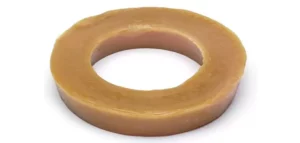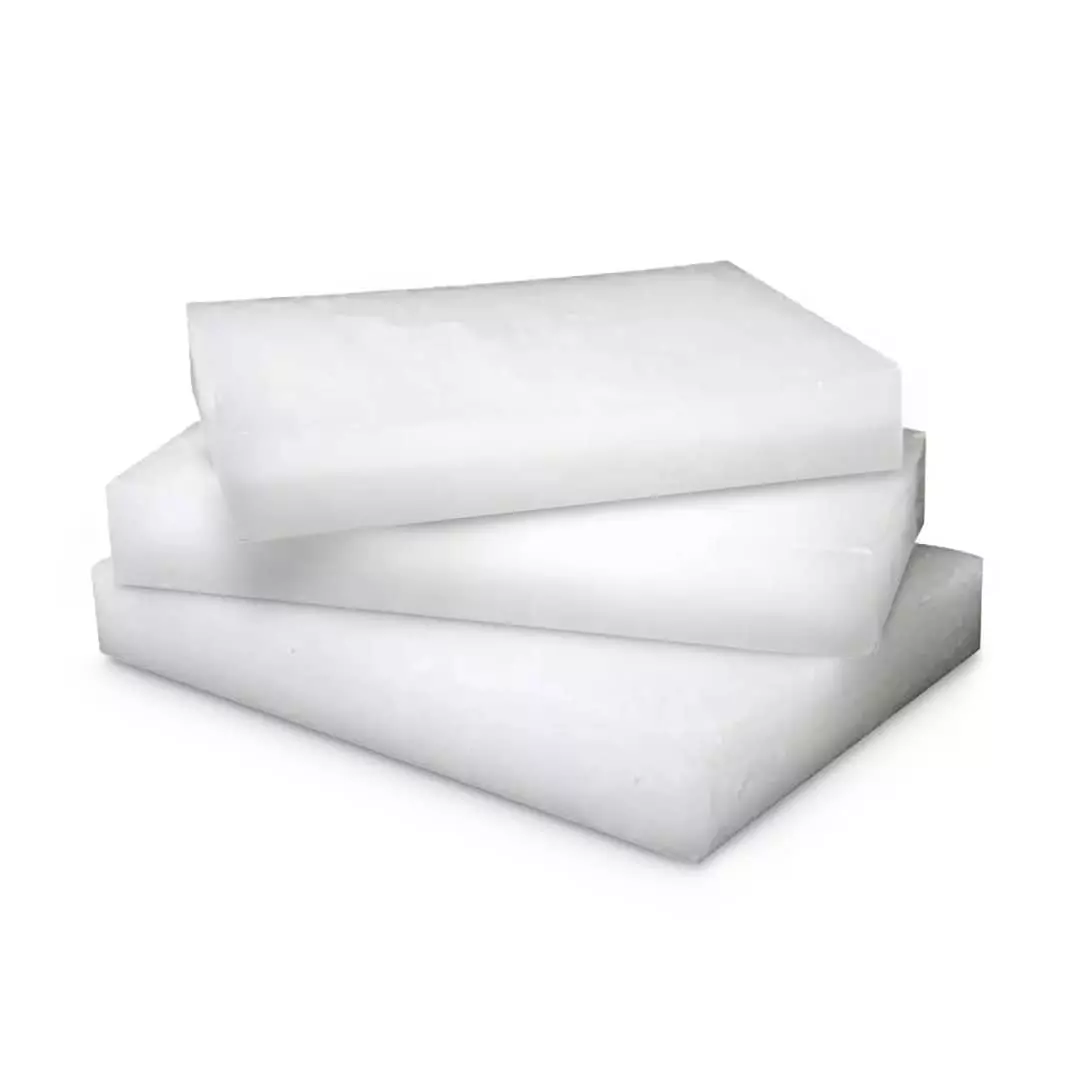Slack wax
Crude oil is blended with paraffin wax to produce Slack Wax. The oil content of 10% to 30% is found in Slack Wax mixtures. When lubricating base oils for Group I, slack wax is produced. As part of the process of producing Group I lube base oils, the feedstock is first extracted with solvents to remove aromatics through a process known as raffination. As raffinates are diluted with solvents such as methyl ethyl ketone (MEK), their viscosity is lowered to improve filterability at low temperatures. Afterward, the diluted oil is chilled between -10°C and -20°C. As a result, wax crystals are formed, precipitate, and are removed by filtering. After filtration, this remaining wax will become slack wax. As a slack wax supplier, we tend to produce the product you need.
Light slack wax
Yellow or light brown color, easily meltable slack wax light grade with 10% oil content. Its melting point is 57 °C, which makes this slack wax suitable for a variety of applications. A light grade of slack wax that contains 10% oil content is one of the products of refineries that was regarded as waste about two decades ago, but nowadays, this wax is sought by companies all over the world. Oil and paraffin wax mix to make the slack wax light grade. The light grade of slack wax is commonly used in paraffin wax as a raw material. Slack wax exports from Iran are in high demand, so sometimes factories have to wait for their raw materials. Even though the odor and color of light slack wax differ from refinery to refinery and may not be constant all the time, it is mild.
Heavy slack wax
This byproduct is produced when lubricants or base oils are produced. Oil and waxes make up slack wax, which may contain as much as 40% oil content depending on the origin of the material. High melting and congealing points characterize heavy slack wax. The melting point of heavy slack wax is 68°C, and it is darker than light slack wax grade. Heavy slack wax is mainly used for binders in wax emulsions, water-proofing in artificial wood, matchmaking, jar candles, industrial lubricants, surfboard coatings, polishing boards, cable filling, and paraffin wax.
| Method | Result | Test Method |
|---|---|---|
| Flash Point | 230 | ASTM D-92 |
| Kinematic Viscosity @ 100°C | 5 | ASTM D-445 |
| Specific gravity 25 ˚C/25 ˚C | 0.80 | ASTM D-190 |
| Congealing Point | 55 | ASTM D-937 |
| Oil Content | 8-10 | ASTM D-721 |
| Color | 3 | ASTM D-1500 |
Slack wax uses
In the industry, it is widely used. Various industries require slack wax as a primary substance. The first step is to convert slack wax into paraffin. When this occurs, the wax is to be considered of greater value. The paraffin wax that Slack Wax produces can be used widely. As the slack wax passes through several steps, it turns into paraffin, the main substance that makes up the candle. This is an easy process. Paraffin wax serves an important purpose in histology and pathology labs. There is also a significant artistic use for paraffin wax. This substance is the best for producing wax which is suitable for wax carving. A textile industry requirement for Slack Wax is also noted. The use of paraffin and slack wax for certain applications such as thermal insulation and protection is recommended. Textiles can be coated with paraffin. To avoid heat or chill, paraffin is very appropriate material. Among the many uses of slack waxes are the manufacturing of wax emulsions, construction boards, matches, candles, rust-preventive products, and moisture barrier products.

Refining process of slack wax
A factory DE-oils and DE-colors slack wax to produce paraffin wax, or various levels of refinement, from 0.5% to 7% oil content depending on the process. When slack wax is extracted, and paraffin wax is produced, what remains is residue oil or foot oil, and this product is still used in several industries. The oil content of slack wax ranges from 5% to 35%, and melting points range from 50°C to 55°C. Its color varies from yellow to brown, and both light and heavy types are used mainly in paraffin wax manufacturing and matches manufacturing.
Slack wax properties
By gaining an understanding of slack wax properties, you will be capable of determining how it can be used in various industries.
· Resistant to water
Due to its monomolecular structure, slack wax and its products protect surfaces from getting wet when rubbed on them. In general, Slack wax acts as a defender against water penetration.
· Low density
Slack wax can therefore be added in high quantities without being concerned with weight. Light materials are often referred to as low-density materials. Industries can benefit from light, efficient materials.
· Electrical insulation
Slack wax is useful in the electrical industry as it causes electrical insulation. During this phase of the material, electrical insulators have numerous applications. For instance, to ensure the safety of the electric circuits, you can use slack wax products to cover the board and other surfaces.
· Lubricant
It is well known that lubrication is a critical process for every industry. It reduces the heat that is created by industrial motion. The heat generated by a surface being drawn to another is dangerous and can cause harm. Heat decreases the speed of movement. Thus, the lubrication process will be the answer to this problem.
Contact us with your number
+989100400067

